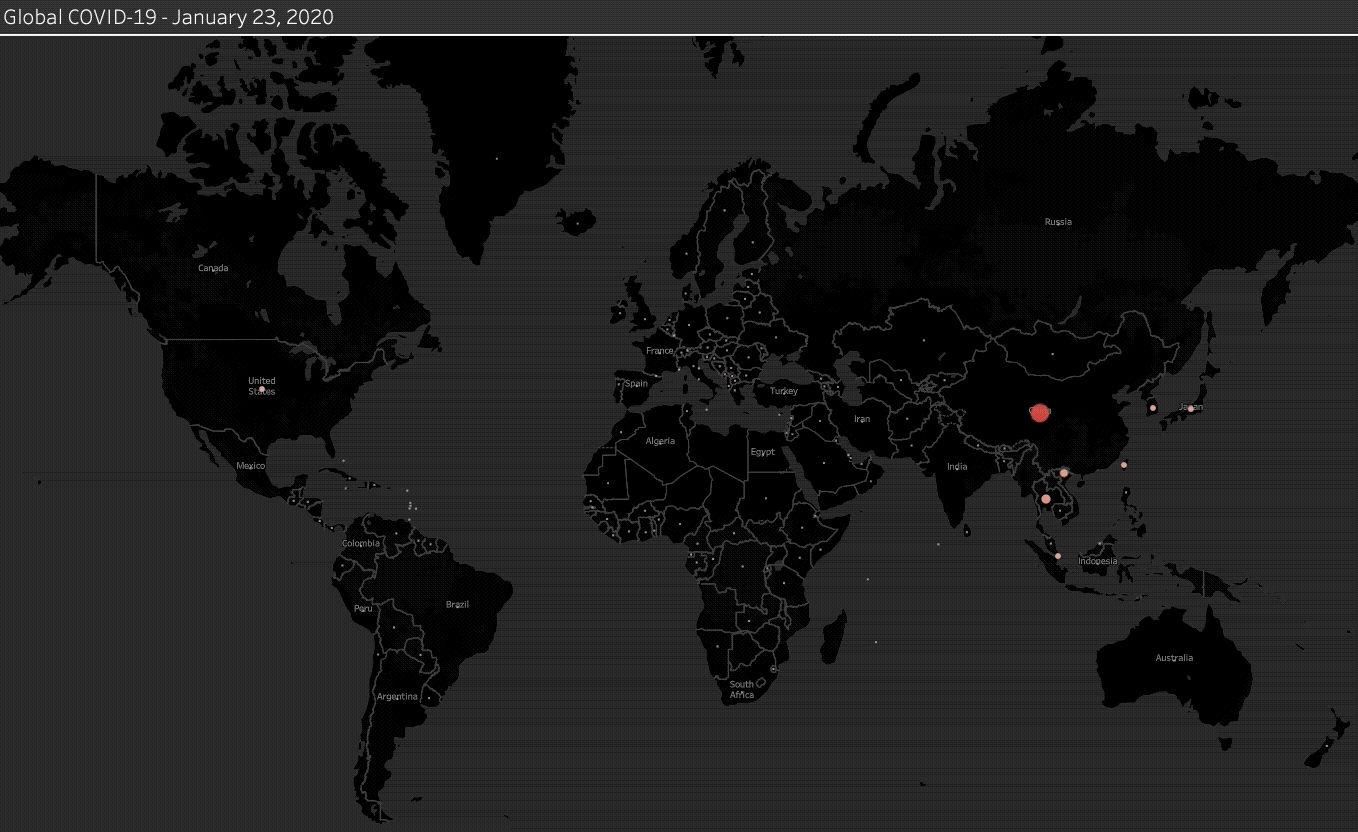Coronavirus Pakistan: As we write this, we can hear a nearby mosque announcing instructions from the Government of Pakistan for people to remain within the confinement of their homes. These truly are unprecedented times.
Overview
If we consider the growth of Coronavirus (COVID-19) cases in all countries from day 1 (the day when the first case was detected in a country) Pakistan would have the 10th highest growth rate of cases out of 180 countries. As of 23 March 2020, Pakistan ranks 29th highest in the number of cases in the world. These are alarming numbers.
Pessimistic projections modelled on Italy put Pakistan’s total count at 50,315 cases and 2,012 deaths in just the next 22 days (14th April 2020). In contrast, optimistic projections modelled on South Korea put Pakistan’s total count at 8,385 cases and 335 deaths by the same date. These projections show the significant difference control measures and their timing can make on the overall outcome of the Coronavirus pandemic.
A paper by Imperial College published on the 16th of March concluded that suppression (social distancing) and not mitigation (herd immunity), where the virus is allowed to spread in a controlled manner to build immunity, is the only viable strategy for the UK & US. Mitigation would overwhelm the health care systems and result in the order of 250,000 and 1.2 million deaths for the countries respectively.
Compared to the UK, Pakistan has a significantly lower hospital bed count per 1,000 people (0.6 compared to 2.8). Apart from the low bed count, the total number of ventilators in Pakistan for the entire population of 220 million+ people currently stands at just 2,300.
Pakistan has now taken strong social distancing measures to close down schools and colleges, lockdown provinces and increase awareness. It is now up to the people of Pakistan to adhere to these policies.
Please consider sharing this study to help raise awareness among your community.
Pakistan Has the 10th Highest Growth Rate of Coronavirus Cases out of 180 Countries
Countries have been affected by Coronavirus at different points in time but if we consider the growth of cases in all countries from day 1 (the day when the first case was detected in a country) Pakistan would have the 10th highest growth rate of cases in the world as of day 21 (23 March 2020), higher than Italy, Spain, USA, UK, South Korea and China.
Chart 1 – Total Cases by Number of Days Since First Case
Pakistan Currently Ranks 29th Highest in Number of Cases Out of 180 Countries
Pakistan ranks 29th highest in number of cases out of 180 countries. The overall number of cases (784) are still relatively small compared to China (81,649) and Italy (59,138) as of 23 March 2020. With our current growth rate, our total case count could reach those levels quickly depending on the control measures we take, how quickly we take them and how well they are maintained.
South Korea and China are two countries that have managed to successfully control the disease (at least for now) after having a high initial growth rate. More on this is discussed later.
Chart 2 – Top 35 Countries By Total Cases – 23 March 2020
| Rank | Country | Cases |
| 1 | China | 81,649 |
| 2 | Italy | 59,138 |
| 3 | United States | 35,206 |
| 4 | Spain | 28,572 |
| 5 | Germany | 24,774 |
| 6 | Iran | 21,638 |
| 7 | France | 16,018 |
| 8 | South Korea | 8,961 |
| 9 | Switzerland | 6,971 |
| 10 | United Kingdom | 5,683 |
| 11 | Netherlands | 4,204 |
| 12 | Austria | 3,631 |
| 13 | Belgium | 3,401 |
| 14 | Norway | 2,132 |
| 15 | Sweden | 1,906 |
| 16 | Australia | 1,709 |
| 17 | Portugal | 1,600 |
| 18 | Brazil | 1,546 |
| 19 | Canada | 1,430 |
| 20 | Denmark | 1,395 |
| 21 | Malaysia | 1,306 |
| 22 | Turkey | 1,236 |
| 23 | Czech Republic | 1,165 |
| 24 | Japan | 1,089 |
| 25 | Israel | 1,071 |
| 26 | Ireland | 906 |
| 27 | Luxembourg | 798 |
| 28 | Ecuador | 789 |
| 29 | Pakistan | 784 |
| 30 | Thailand | 721 |
| 31 | Poland | 634 |
| 32 | Chile | 632 |
| 33 | Finland | 626 |
| 34 | Greece | 624 |
| 35 | Iceland | 568 |
Total Cases & Deaths Projected for Pakistan by 14 April 2020
Three models have been created using differential equations and extrapolation to project Pakistan’s total Coronavirus cases and deaths 22 days into the future to 14 April 2020:
- Italy Model: The first model is a pessimistic model based on the growth rate of cases in Italy, which is one of the worst-hit countries in the world. It is still early to say, but it is believed that the reason for the virus being wide-spread in the country is because it was circulating undetected in the country for some time before the first case was reported.
- Extrapolation Model: The second model uses Pakistan’s 21-day history of the growth of Coronavirus cases and extrapolates it 22 days into the future.
- South Korea Model: The third model is an optimistic model based on the growth rate of cases in South Korea, which has done well to control the virus. Behind this success has been one of the most expansive and well-organized testing programs in the world, combined with extensive efforts to isolate infected people and trace and quarantine their contacts.
Chart 3 – Pakistan’s Projected Cases by 14 April 2020
Following Italy’s growth, Pakistan is projected to reach 50,315 cases in just the next 22 days (14 April 2020). The Extrapolation Model and South Korea Model put Pakistan’s case count at 12,946 and 8,385 respectively by the same date.
The overall fatality rate of known Coronavirus cases for the world is 4.3% (total deaths divided by total cases). This fatality rate has been used to calculate the total number of projected deaths resulting from the three models by 14 April 2020.
It is unclear what Pakistan’s fatality rate is going to be in reality. It may be lower than 4.3% due to our young population or higher due to our low hospital bed capacity of just 0.6 per 1,000 people. It is too early to say.
Chart 4 – Pakistan’s Projected Deaths by 14 April 2020
Total cases and fatalities from the three projections are summarised in the table below.
Table 1 – Results of the Three Projections for 14 April 2020
| Model | Total Cases | Total Deaths |
| Italy | 50,315 | 2,012 |
| Extrapolation | 12,946 | 517 |
| South Korea | 8,385 | 335 |
The stark difference between the projection results offers an insight into how the outcome of the pandemic for Pakistan can be very different, depending on the control strategy that is adopted.
How the Number of Cases & Fatalities Can Be Reduced
A paper by Imperial College published on the 16th of March assesses interventions in the absence of a vaccine, aimed at reducing contact rates in the population (social distancing) and thereby reducing the spread of the virus.
The paper has had a profound effect and helped change the Coronavirus policy of the UK and US and significantly ramp up efforts to “flatten the curve”.
Two strategies for curbing the growth rate of cases presented in the paper are:
- Suppression: Here the aim is to reduce the number of people a person with the disease infects, to 1 or less than 1. Measures such as case isolation and social distancing help to achieve this.
- Mitigation: The aim with mitigation is not to interrupt transmission completely, but to reduce the health impact of the pandemic by protecting those that are most vulnerable (people with previous conditions, the elderly, etc). This strategy has been previously used in the 1957, 1968 and 2009 influenza pandemics. In this case, immunity builds up through the pandemic (herd immunity), leading to a decline in cases and transmission.
The challenge with suppression is that measures, such as social distancing, will have to be maintained for as long as the virus is circulating or a vaccine becomes available, which may take at least 12-18 months.
The challenge with mitigation is that since the spreading of the virus is not interrupted completely, there are comparatively a higher number of cases during the peak. A country’s health care system has to be able to accommodate a greater number of critical patients at a given time. Failing to do so results in the health system to become overwhelmed, causing a higher overall mortality rate.
Chart 5 – Example of an Overwhelmed Health System
This chart from the Tomas Pueyo Analysis shows how quickly the health system of the US could get overwhelmed by patients and drastically outnumber the number of ICU beds (the red dotted line at the bottom).
There is already news of the Aga Khan Hospital closing its testing facilities and emergency services due to an influx of patients. Remember, this is day 21, we are just getting started.
Measures Pakistan Should be Taking Immediately
The Imperial College paper concludes that suppression is the only viable strategy at the current time. Mitigation is unlikely to be a feasible strategy for the UK or US as even in the most optimistic scenario, surge limits for both general ward and ICU beds would be exceeded by at least 8-fold. In addition, even if all patients are treated, predicted deaths for the UK and US would be in the order of 250,000 and 1.2 million respectively.
It is important to note here that the UK has 4.7 times more hospital beds per 1,000 people than Pakistan (2.8 beds vs 0.6 beds) and Pakistan currently only has 2,300 ventilators in entirety for a population of 220 million+ people.
Furthermore, an overwhelmed health care system will result in significant collateral deaths, where patients in a critical state related to conditions other than Coronavirus (such as heart attacks) are not able to receive treatment on time.
According to the Imperial College paper, non-pharmaceutical interventions required for suppression include a combination of the following measures:
- Case isolation
- Social distancing of the entire population
- Either household quarantine or school and university closure
Pakistan has now taken strong measures to close down schools and colleges, lockdown provinces and increase awareness. It is now up to the people of Pakistan to adhere to the policies.
An aggressive policy such as this should lead to a peak of new cases approximately 3 weeks from now and a decline in cases thereafter, for as long as the policy remains in place. This would ensure greater availability of hospital beds and ventilators for more critical cases.
Further Study is Required
The Centres for Disease Control and Prevention (CDC) reports the following fatality rate for various age brackets from the Coronavirus:
| Age Brackets | Fatality Rate |
| 85 years & above | 10-27% |
| 65-84 years | 3-11% |
| 55-64 years | 1-3% |
| 20-54 years | Below 1% |
| 19 years & below | 0% |
Pakistan is unique due to its overwhelmingly young population. According to the Pakistan Bureau of Statistics, almost 51% of our population is 18 years or younger (0% fatality rate) and approximately 95% is below 65 years of age (1-3% fatality rate).
We need to develop our own extensive models taking factors such as age demographic, economy and health care system into account, to conclude what strategy is the right course of action in the long term for our country. Although most countries have now adopted the suppression strategy, we should not rely solely on models and data from other countries and discount alternative strategies that may or may not work for us.
What You Can Do to Help
Please help raise awareness amongst your family, friends and peers by sharing this study to promote the practice of social distancing and quarantine yourself in the event of showing symptoms. We are all in this together.
Data Source Used for the Study
There are three available data sources for world-wide COVID-19 cases. These sources include the World Health Organisation (WHO), European Centre for Disease Prevention & Control (ECDC) and John Hopkins University (JHU). The variance in data between the three sources is small. We have used data from the ECDC for the purposes of our study. A comparison between the data sets can be found here.
All contents of this article are free to be disseminated with an attribution link to Shopsy.pk.



